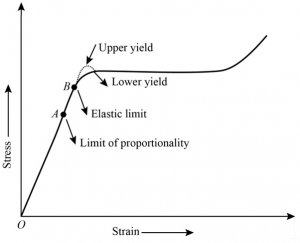Elastic and Proportional Limit
When a material undergoes the deformation by the influence of some external force, it also exhibits the internal force which opposes then deformation and regains its original form. When a material deformed under an external force the material will break, we can call it as the elastic limit of the material.
What is Elastic Limit?
If an elastic material is stretched or compressed beyond a certain limit, it will not regain its original state and will remain deformed. The limit beyond which permanent deformation occurs is called the elastic limit.
What is Proportional Limit?
Proportional limit is defined as the highest stress at which stress and strain are directly proportional so that the stress-strain graph is a straight line such that the gradient is equal to the elastic modulus of the material. For many metals, the proportional limit is equal to the elastic limit.
The stress strain curve will describe the elasticity of a material. In the case of crystalline material or metals the stress strain graph will be linear for small deformations. The relationship between stress and strain is given by Hooke’s law. The stress beyond the elastic limit the relation is not linear. Beyond the elastic limit the materials undergo plastic deformation. The graphical representation is given below:

Elastic limit as the point up to which the material remains same and the proportional limit as the point up to which the stress and the strain are directly proportional.
